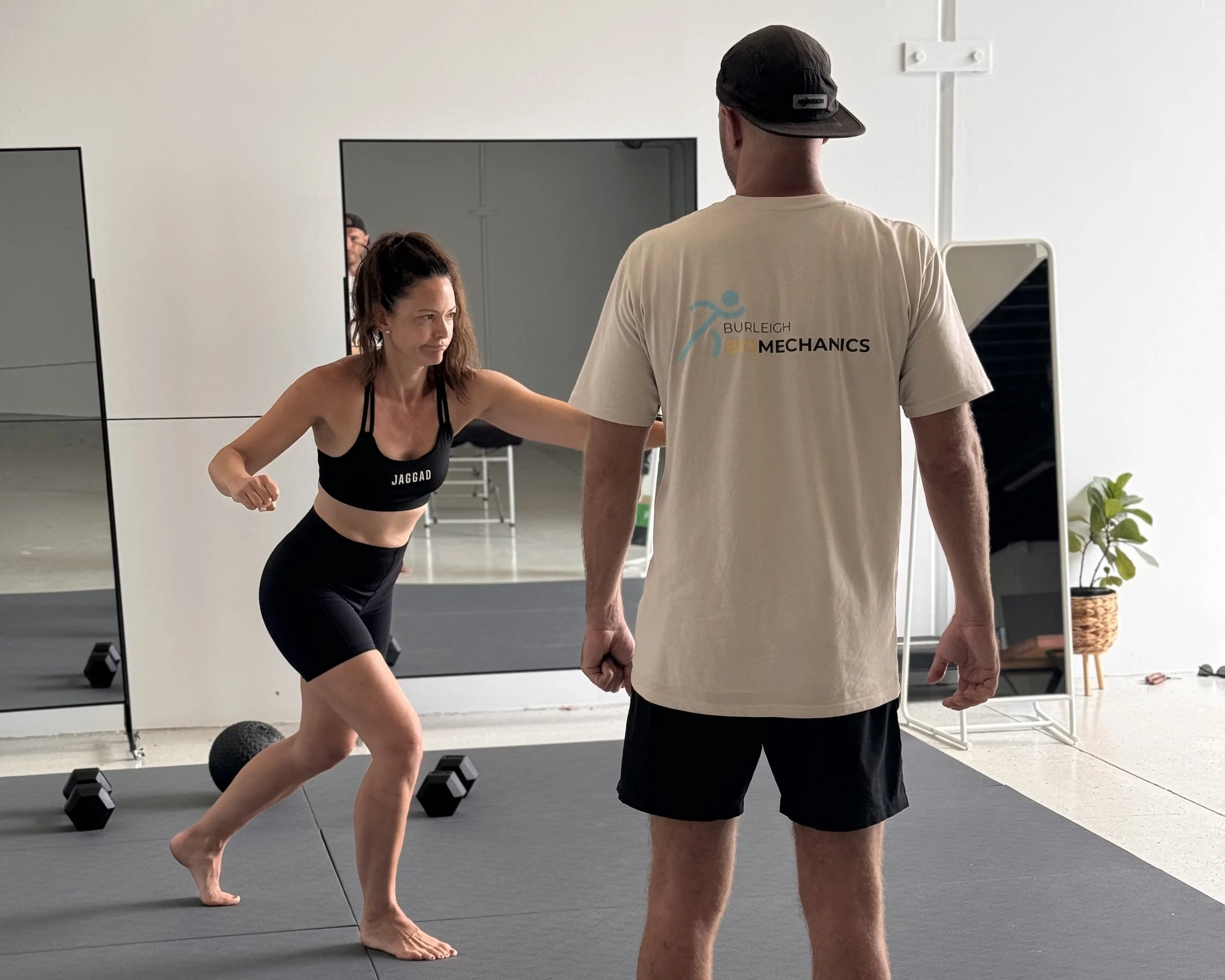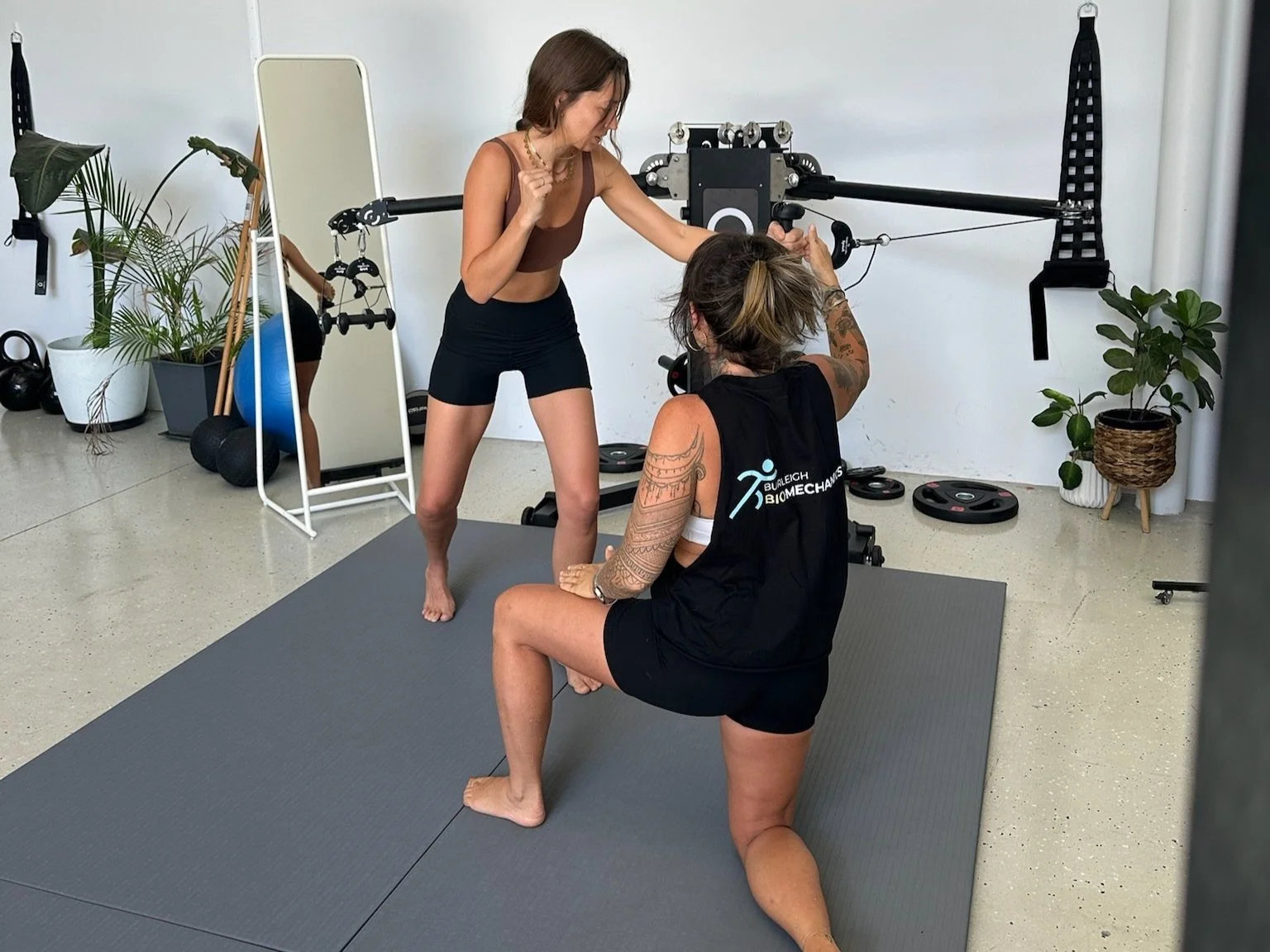Hypermobility and Exercise - what approach to take
What Works, What Doesn’t, and What We Do at Burleigh Biomechanics
If you're looking for safe, effective exercises for hypermobile joints, you're in the right place. At Burleigh Biomechanics, we focus on helping people retrain their movements.
We work with those who have joint hypermobility syndrome and Ehlers-Danlos Syndrome (EDS). Our goal? Help you build real-world strength, reduce pain, and improve long-term function without pushing your joints into further dysfunction.
Understanding Joint Hypermobility
Joint hypermobility means your joints move beyond the typical range of motion. You might hear it called being double-jointed, but in reality, it often involves more than just flexibility. People with hypermobility frequently experience:
Joint pain
Muscle pain and fatigue
Risk of dislocations or subluxations
Poor proprioception
Impacts on mental health from chronic instability
Many also have connective tissue disorders like Ehlers-Danlos Syndrome, which means traditional exercise approaches may do more harm than good.
Functional Patterns Result
The Problem With Most "Hypermobility Workouts"
If you've tried general mobility or yoga classes marketed as good for hypermobility, you may have found your symptoms got worse. That's because stretching an already unstable joint won't improve your function. It often increases joint laxity.
Hypermobility exercises to avoid include:
Passive stretching routines
Overhead pressing with poor trunk control
Any movement that maximises range without controlling it
Why avoid these? Passive stretching lengthens already unstable tissues without teaching your body how to stabilise them, often worsening symptoms like joint pain or muscle fatigue.
Overhead pressing can further destabilise hypermobile shoulders and spines, especially when trunk mechanics aren’t well integrated. Pushing your body into extreme positions can cause small damage to ligaments and tendons. This is especially true for people with connective tissue disorders like Ehlers-Danlos Syndrome.
Hypermobility isn’t a flexibility issue — it’s a control issue. That’s why our approach prioritises mind-muscle control, optimal joint stacking, and developing strength in controlled, functional ranges. These principles help your nervous system create tension and improve proprioception. This way, hypermobile joints do not depend on passive structures for stability.
Instead, we focus on joint hypermobility syndrome exercises that promote muscle strength, joint stacking, and mind-body connection.
What We Do Differently at Burleigh Biomechanics
We use the Functional Patterns methodology to train integrated movement systems, not isolated muscles. For hypermobility and exercise, that means:
Building tension through the fascial slings through exercises for joint hypermobility
Teaching how to control your range of motion, not expand it
Focusing on gait, standing posture, and breathing mechanics
This type of work isn’t about lifting heavier or getting more mobile — it’s about improving joint stability, teaching your body where its safe limits are, and then moving within those constraints in ways that actually stick.
Key benefits:
Reduce pain caused by compensation
Improve control in the starting position of movement
Prevent injury from instability
Build actual strength that translates to daily life
strengthening exercises
Who This Is For
Our approach works best for:
People with hypermobility syndrome or diagnosed EDS
Individuals dealing with chronic joint pain or instability
Those who’ve been let down by physical therapy that didn’t account for systemic joint laxity
If you're hypermobile, you don't need to avoid physical activity — you need a smarter way to train. One that teaches your body how to generate tension in the right places, at the right time.
Why Burleigh Biomechanics Is the Local Choice for Hypermobility on the Gold Coast
Located near the heart of Burleigh Heads on the Gold Coast, we’re one of the few clinics in the region offering Functional Patterns-based training specifically tailored to people with hypermobility. If you are looking for hypermobility workouts that won’t make you feel worse, our team can help. We know how to build joint strength without putting too much stress on sensitive areas.
We’ve helped clients from Palm Beach, Miami, and beyond find relief from joint pain and chronic instability through customised strengthening exercises that prioritise long-term progress. If you live on the Gold Coast, you might struggle to find exercise experts. Many of these experts may not understand joint hypermobility syndrome.
You are not alone in this situation. We are here to help you.
We don’t believe in generic protocols. Instead, we assess your gait, posture, and breathing patterns to create a training plan that fits your unique structure. With our approach, you’ll not only improve joint support, but also gain the confidence to move well in daily life, whether you’re walking the Burleigh foreshore or doing rehab at home.
Final Thoughts
If you are looking for exercises for hypermobility syndrome or double-jointedness, focus on how you move. It is more important than how far you can move.
Ready to train smarter and take control of your body?
Book a session at Burleigh Biomechanics and experience the difference a structured, integrated approach can make.





